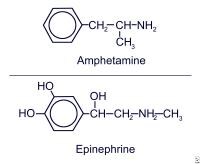Latest real estate studies indicate that community individuals disproportionately experience home foreclosures. Other far too showed categories include Africa People in america, tenant individuals, individuals with children, and foreign-born property owners. For example, research show that Africa American customers are 3.3 periods more likely than white customers to be in property foreclosed, while Latino and Oriental customers are 2.5 and 1.6 periods more likely, respectively. As another mathematical example, over 60 % of the home foreclosures that took place in New You are able to City in 2007 involved lease qualities. Twenty % of the home foreclosures national were from lease qualities. One purpose for this is that the majority of these individuals have obtained with dangerous subprime foreclosure loan . There is a major lack of analysis done in this area appearing problems for three reasons. One, not being able to explain who encounters property foreclosed makes it challenging to develop guidelines and programs that can prevent/reduce this pattern for the future. Second, scientists cannot tell the level to which recent home foreclosures have changed the developments in homeownership that some categories, traditionally missing equivalent access, have made. Third, analysis is targeted too much on community-level effects even though it is the individual individuals that are most highly affected. Many individuals report their own or their close relatives health issues as the purpose for going through a foreclosure loan . Many do not have health insurance coverage and cannot effectively provide for their healthcare needs. This again points to the fact that home foreclosures impacts already insecure communities.
Friday, July 13, 2012
Monday, July 2, 2012
About The drug Amphetamine
Amphetamines are a class of compounds increasingly abused in regions of the world such as the western United States, Australasia, and Europe. Synthetic amphetamine compounds commonly are produced in clandestine laboratories and vary in purity and potency. Other potentials for amphetamine abuse include prescription medications and various over-the-counter diet pills.
Clinical effects of amphetamine abuse are significant and commonly observed in EDs. The ED physician's ability to recognize and treat amphetamine intoxication is very important.
The phenylethylamine structure of amphetamine (see the image below) is similar to catecholaminergic, dopaminergic, and serotonergic agonists (biogenic amines), which may explain their actions.
 Amphetamine and epinephrine.
Amphetamine and epinephrine.
The relative activities that amphetamines have to stimulate the receptors of these biogenic amines are dependent on the chemical substituents on the amphetamine molecule; thus, the clinical presentation is dependent on the type of amphetamine used. For example, methamphetamine lacks much of the peripheral stimulant properties of amphetamine while still offering euphoric and hallucinogenic properties. These actions are similar to those of cocaine; however, while effects of cocaine last for 10-20 minutes, duration of amphetamine action is much longer, lasting as long as 10-12 hours.
The routes of amphetamine administration may be oral (ingestion), inhalation (smoke), or injection (intravenous). Oral use is associated with an approximate 1-hour lag time before onset of symptoms, whereas inhaled and intravenous methods yield effects within a few minutes. Peak plasma concentrations occur in 5 minutes with intravenous use, 30 minutes with nasal or intramuscular use, and 2-3 hours postingestion.
Use appears to vary with gender and race. Recent work has found correlations between personality traits (risk taking and reward sensitivity) and responses to amphetamine use
Clinical effects of amphetamine abuse are significant and commonly observed in EDs. The ED physician's ability to recognize and treat amphetamine intoxication is very important.
The phenylethylamine structure of amphetamine (see the image below) is similar to catecholaminergic, dopaminergic, and serotonergic agonists (biogenic amines), which may explain their actions.
 Amphetamine and epinephrine.
Amphetamine and epinephrine.The relative activities that amphetamines have to stimulate the receptors of these biogenic amines are dependent on the chemical substituents on the amphetamine molecule; thus, the clinical presentation is dependent on the type of amphetamine used. For example, methamphetamine lacks much of the peripheral stimulant properties of amphetamine while still offering euphoric and hallucinogenic properties. These actions are similar to those of cocaine; however, while effects of cocaine last for 10-20 minutes, duration of amphetamine action is much longer, lasting as long as 10-12 hours.
The routes of amphetamine administration may be oral (ingestion), inhalation (smoke), or injection (intravenous). Oral use is associated with an approximate 1-hour lag time before onset of symptoms, whereas inhaled and intravenous methods yield effects within a few minutes. Peak plasma concentrations occur in 5 minutes with intravenous use, 30 minutes with nasal or intramuscular use, and 2-3 hours postingestion.
Use appears to vary with gender and race. Recent work has found correlations between personality traits (risk taking and reward sensitivity) and responses to amphetamine use
Subscribe to:
Comments (Atom)